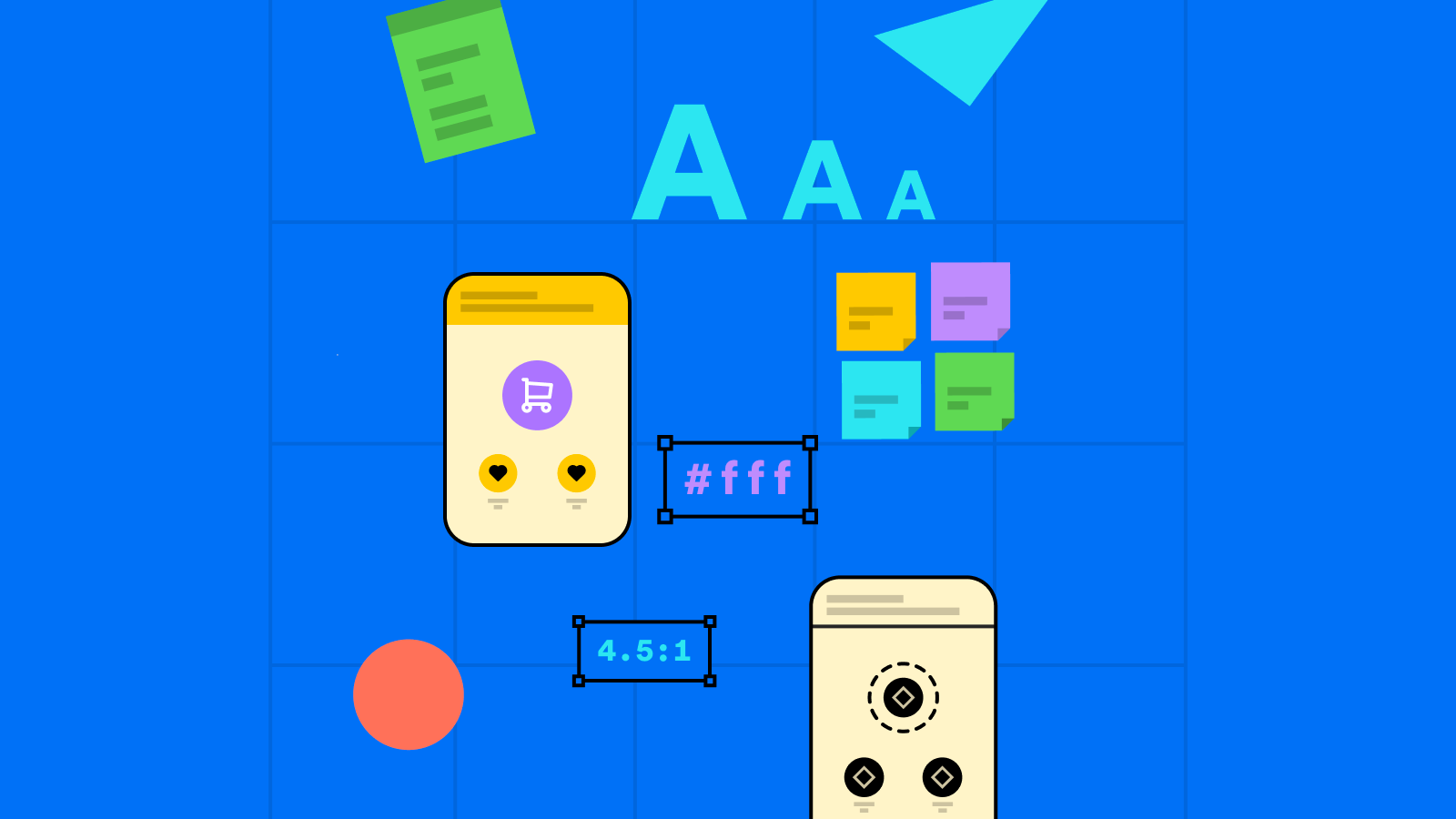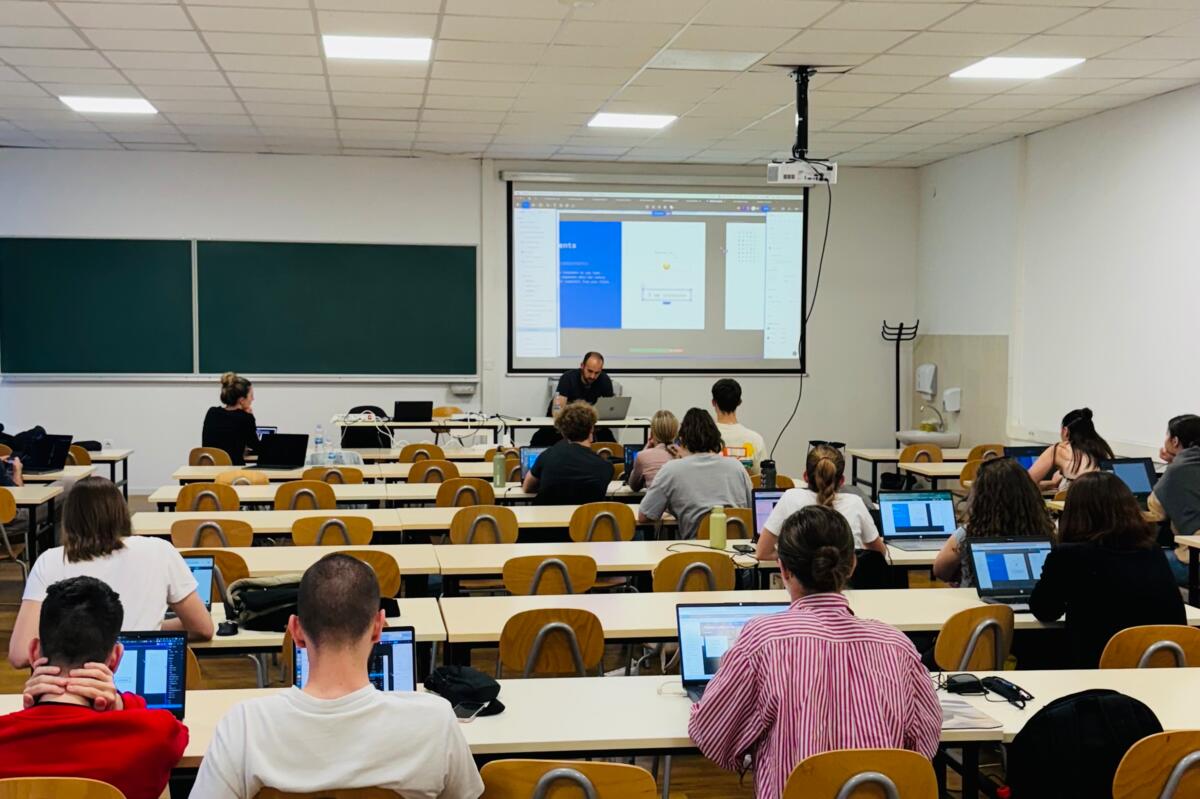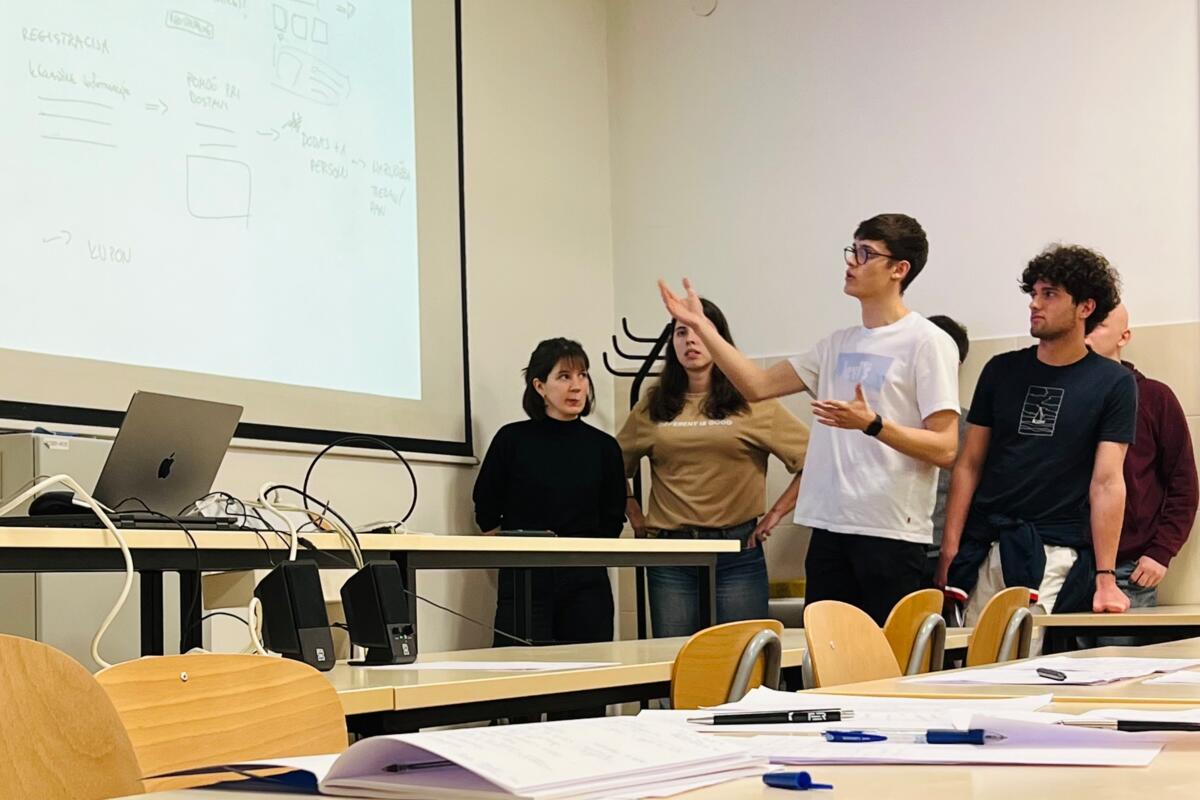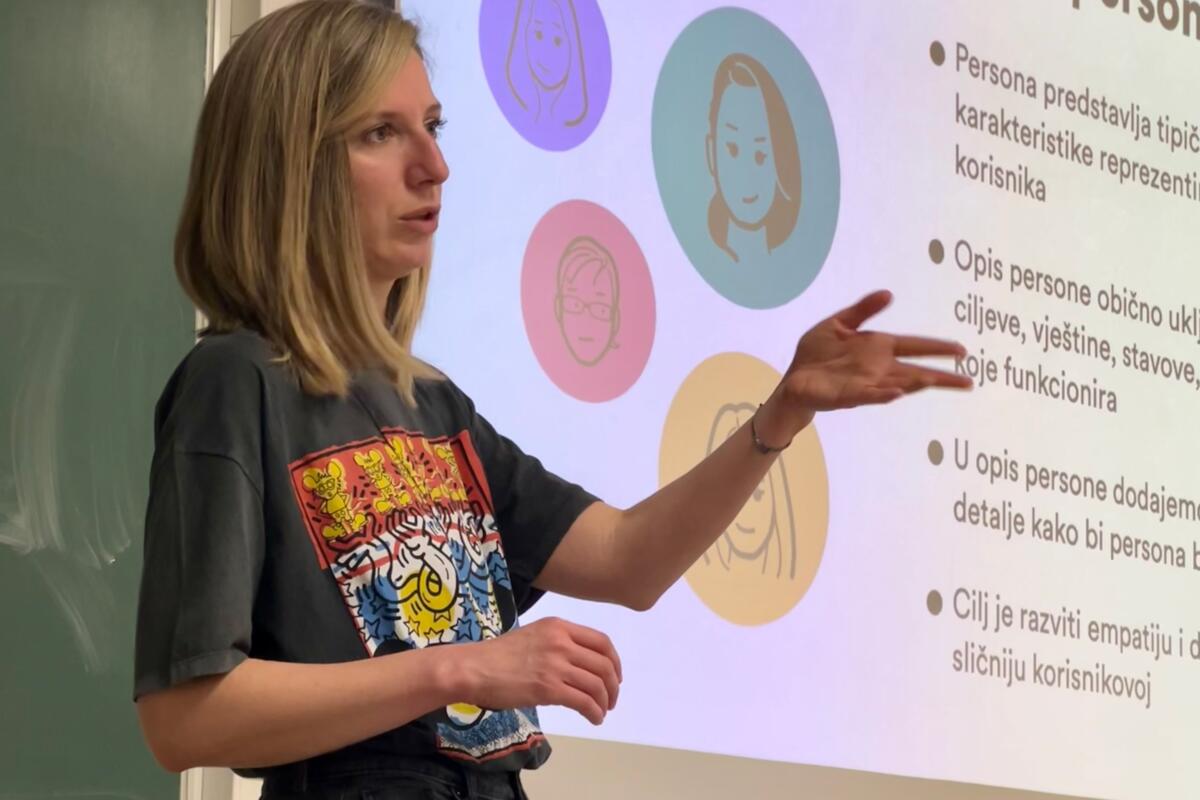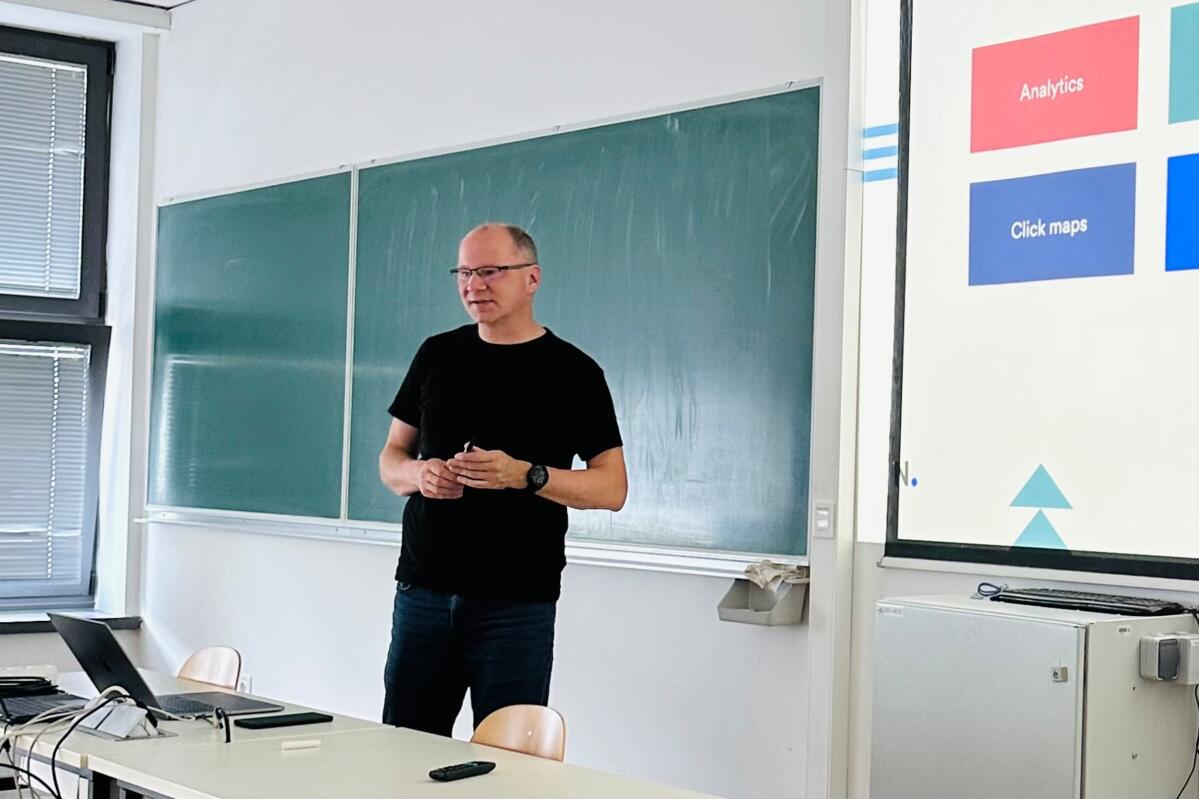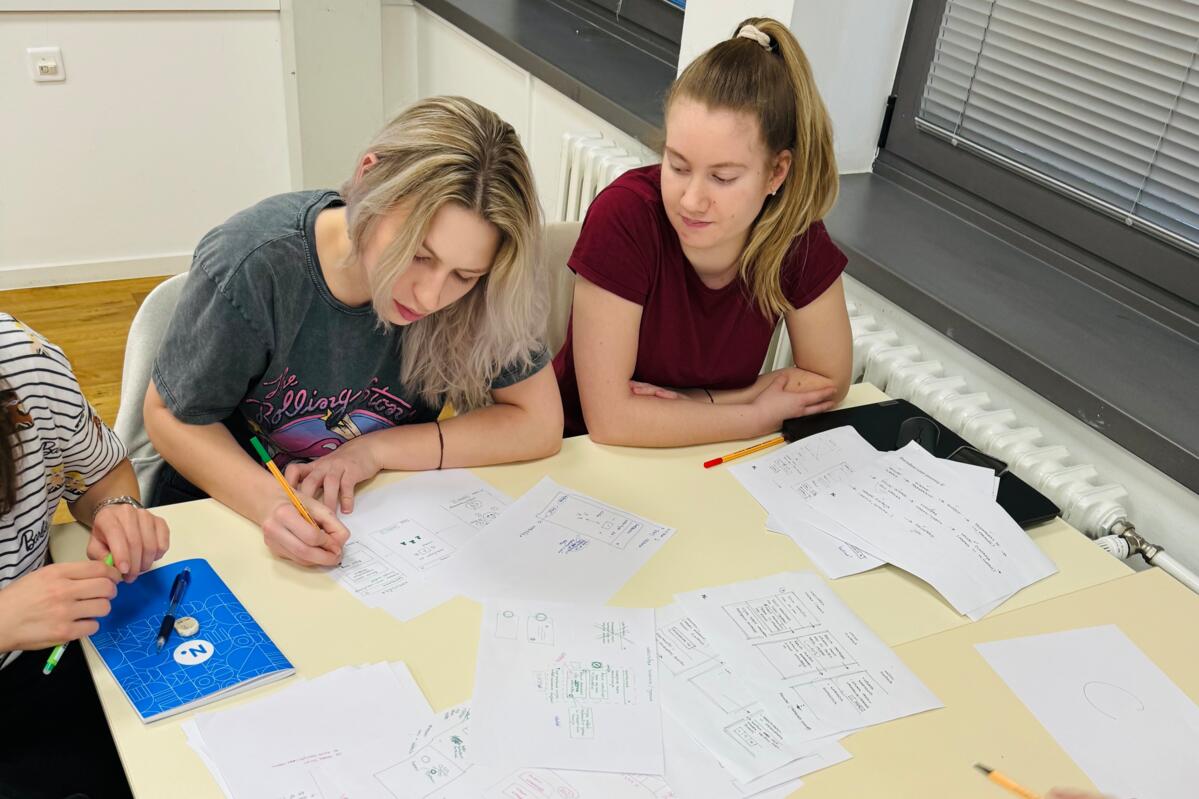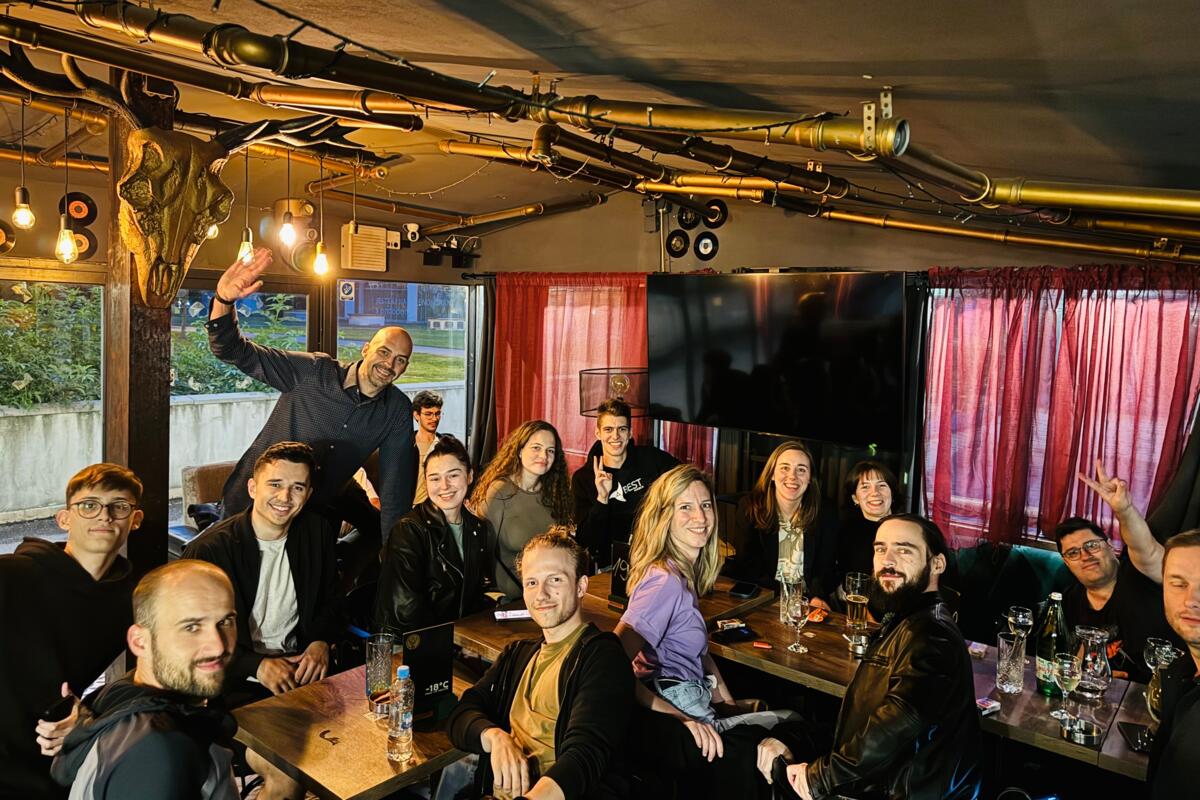For the second consecutive year, Netgen is proud to be part of the Faculty of Electrical Engineering and Computing (FER) curriculum through the FER Skills program. During the last summer semester, and recently starting again this year, our UX/UI team members, Grga, Igor, Katarina and Vjeran, led a skill-based course for FER students.
Skill-based courses are designed at the subject level of FER and are often conducted in collaboration with companies from the real sector, aiming to cover topics and content that are not part of the mandatory curriculum but offer practical experience. This program bridges the gap between academic knowledge and real-world applications, preparing students for successful careers in the technology and engineering fields.
A Glimpse into the UX and UI Design Course
The course “User Experience and User Interface Design” was designed to introduce FER students to the world of UX and UI design, showing how these concepts come to life in real-world projects. The primary effort was to introduce design to students who are mainly oriented toward technical and programming fields.
The emphasis was on developing a deep understanding of how digital products come to life, encompassing both strategic thinking and practical execution, independent of future professional roles. Whether they become developers, digital solution architects, project or product managers, or find themselves in another role, the application of these skills will be crucial and useful in their work processes.
Last year, our experts at Netgen delivered a series of lectures and workshops focused on UX principles, methodologies, and best practices. Through this course, students gained essential skills to conceptualize, design, and validate user interfaces that address user needs and are intuitive. They explored the full UX process - from research and ideation to prototyping and testing - preparing them to craft seamless and user-centered digital experiences.
A significant role in the organization and execution of the course was played by the course teacher, prof. dr. sc. Ivica Botički. The Department of Applied Computing, led by professor Botički, recognized the need and made great efforts to assist our instructors in designing the curriculum. Their extensive knowledge and experience significantly contributed to the creation and implementation of the program, for which we are deeply grateful.
The course structure provided a solid theoretical foundation necessary for understanding design concepts, while placing a strong emphasis on hands-on experience. It was designed to follow the process of planning and prototyping a digital product in the way it occurs in real life. Students engaged in various exercises and used relevant design tools to apply what they learned. The number of applicants was limited to 30 participants to ensure conditions for a focused approach to practical work.
From Idea to Prototype: The Journey of Gastromag
To guide students through the entire UX/UI design process, the instructors created *Gastromag*, a fictional food delivery app tailored for seniors, specifically for this course. The idea behind Gastromag was to challenge students to design for a user group with different needs, pushing them to think beyond their own experiences and approach the project with empathy and creativity.
The discovery phase began with an introduction to the discovery workshop and its benefits, focusing on aligning with stakeholders and identifying the business goals and constraints within which the project would operate. It then continued with Igor’s lecture and hands-on exercises on qualitative and quantitative research methods, helping students explore the needs of users. From there, students engaged in collaborative ideation and paper sketching, which was a particular highlight for us as instructors. Through these sessions, they crafted user journeys and low-fidelity wireframes, laying the groundwork for the app’s design.
What’s in it for FER students?
Students engaged in this skill had received a comprehensive introduction to UX design, learning how users interact with digital interfaces and how to improve their experience. The curriculum covered fundamental aspects of the UX process, such as:
- Identifying key users and business goals
- Recognizing critical touchpoints in the user journey
- Developing solutions through prototyping and iteration
- Conducting usability testing, surveys, and interviews
- Implementing accessibility and responsive design principles
Through a combination of lectures and hands-on exercises, students have applied industry-standard tools like Figma to create and refine digital interfaces.
Course Structure and Sessions
The course consisted of nine sessions, each focusing on a key area of UX/UI design:
- Introduction to the UX/UI design process
- Discovery phase: defining user groups and personas
- Research methods: qualitative and quantitative approaches
- Prototyping user interfaces
- UI patterns and design systems
- Working in UI design tools (e.g., Figma) and creating prototypes
- Usability testing: preparation, execution, and analysis
- Synthesis of results and iterative improvements
- Accessibility best practices, tools, and testing
By the end of the course, students were able to conduct UX research, create user personas, test digital interfaces, and apply standard UI patterns. These are crucial skills for anyone looking to enter the field of digital product design.
Highlights, Surprises, and Lessons Learned
Although the instructors were already familiar with the speaker role and student collaborations, this was still a new experience for them. Katarina and Vjeran often hold hands-on sessions at conferences and lead discovery workshops and other UX stages in projects, while Grga has extensive experience conducting workshops in various student initiatives that Netgen supports. Here are some thoughts they shared about the challenges they faced, the expectations they had, and how their initial assumptions aligned with the actual results and outcomes.
Katarina: The experience of teaching at FER was new to me. The biggest challenge was adapting complex UX/UI concepts to the varied skill levels of the students. However, I was pleasantly surprised by their active participation and eagerness to learn, especially during the hands-on exercises. By the end, I felt we had exceeded expectations, and seeing their progress was incredibly fulfilling.
Vjeran: Teaching at a university level required a different mindset compared to agency work, particularly balancing theory and practice. I was impressed by the students’ commitment and curiosity, which went beyond my initial expectations. Despite some challenges, the collaborative atmosphere and their passion for understanding design processes made the experience truly rewarding.
Students as Evaluators
Since every collaborative experience is a two-way street, it’s always important to capture both sides of the story. In addition to the core topics covered in the course, the instructors conducted a retrospective with the students at the end of the semester. Retrospective represents a concept we at Netgen practice regularly in our agency work, as it provides valuable insights after completing each project.
During a retrospective, we take a step back to reflect on the experience, recognizing both its strengths and weaknesses. We summarize what we learned, identify what was missing, pinpoint areas for improvement in the future, and how we can make those improvements. For the students, it was a chance to express their impressions, observations, and suggestions clearly, allowing them to assess the process of learning and working on UX/UI design.
Preparing the next generation of UX designers
The demand for skilled UX designers is continuously growing, and Netgen is excited to be part of a program that fosters innovation and expertise in this field. Through our involvement in the FER Skills program, we aim to bridge the gap between academia and industry, ensuring that students are equipped with the practical knowledge and tools they need to excel in their careers.
Why do we get involved?
FER students primarily pursue careers as engineers. They develop specialized skills and are encouraged to think critically and solve problems in a structured way. However, we wanted to emphasize that successful product development goes beyond technical expertise. Every team member - whether a developer, designer, product manager, client, or business strategist - plays a crucial role in the design process and significantly influences the final product.
In essence, the design of a digital product is a collaborative effort. Every team member brings valuable insights, and their perspectives contribute equally to shaping the final outcome.
The program continues with new improvements
We are excited to continue the program with another generation of students. We decided to upgrade the program with AI features, teaching students how to use them in the process of research and early design. We want to inspire them to utilize AI tools while recognizing that genuine collaboration, creativity, and communication remain uniquely human strengths that AI cannot fully replicate. We also intend to incorporate more hands-on activities, as they have been the most engaging and effective way for students to learn.
We look forward to another successful year of collaboration with FER and can’t wait to see the amazing digital experiences these students will create!
